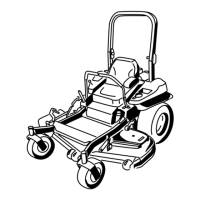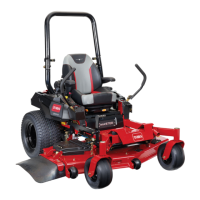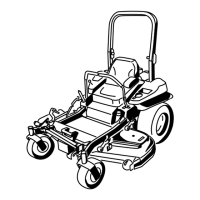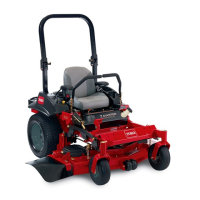Think Safety First (continued)
– Always disconnect the batteries at the battery disconnect provided when
servicing products with lithium-ion batteries.
– Always change out the batteries while servicing the machine with the
lithium-ion batteries machine parked near a service door large enough to
move the product or battery outside in case of an emergency and keep a
re blanket nearby . Do not use a re extinguisher on lithium-ion batteries.
• A void injury due to inferior parts…
Use only original equipment parts to ensure that important safety criteria
are met.
• A void injury to bystanders…
Always clear the area of bystanders before starting or testing powered
equipment.
• A void injury due to projectiles…
Always clear the area of any debris that could be picked up and thrown
by the powered equipment.
• A void modications…
Do not alter or modify any part unless it is a manufacturer ’ s approved
procedure.
• A void unsafe machine operation…
Always test the safety interlock system after adjusting or repairing the
machine. Refer to the machine’ s operator ’ s manual for more information.
• A void electrical shock…
– De-energize the system if you are having to do repairs. Refer to the
machine’ s operator ’ s manual for more information.
– If testing electrical components, ensure you are working in a dry
environment.
– Do not touch exposed terminals.
– Do not wear metal jewelry when working on or near electrical components
or wiring.
– Use only insulated tools whenever servicing electrical components or
wiring.
• Hydraulic System...
– Seek immediate medical attention if uid is injected into the skin.
– Injected uid must be surgically removed within a few hours by a doctor .
– Always bleed pressure from the hydraulic system prior to service.
– Use cardboard or paper to nd hydraulic leaks.
• Use personal protective equipment…
– T ie back long hair , and do not wear loose clothing or jewelry .
– Use appropriate personal protective equipment (PPE) for protecting
yourself from potential hazards in the environment in which you will work.
– Each process outlined in this manual may need dif ferent PPE to protect
the person performing service. Use the proper PPE for the task at hand.
• Using tools…
– All tools should be in proper working order . Do not use tools that are
broken or in disrepair .
– Use the proper tool for the proper application.
• Using lifts, hoists, and jacks…
Safety: Safety Instructions
Page 1–4 2000 Series Z MASTER®Service Manual
3460-328 Rev A
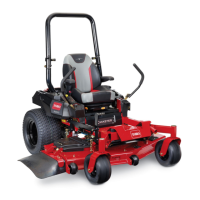
